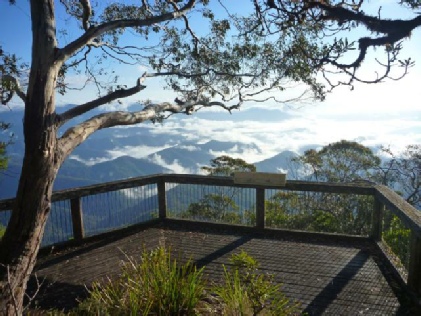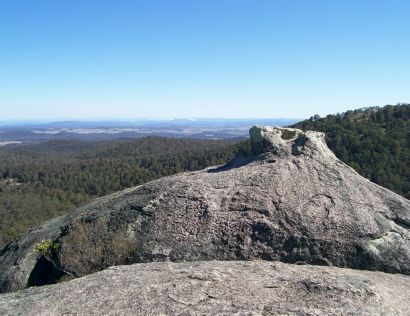

New England National Park

New England National Park
New England National Park is a place of spectacular beauty and pristine wilderness. Part of the Gondwana Rainforests of Australia World Heritage Area, it offers visitors an unforgettable holiday experience or a peaceful weekend getaway.
Discover the ancient world sealed in Gondwana rainforest, wander through snow gum forests dotted with crimson rosellas and see breathtaking views from the Great Escarpment on one of the many walking tracks. Walks range from an easy 200m stroll to multi-
Experience sensational sunrises and breathtaking views stretching over forested valleys all the way to the coast from Point lookout. Pack a picnic and spend a few hours admiring the spectacular view before you.
Visit for the day, or take advantage of the various accommodation and camping options and stay a few days while immersing yourself in this magical world.
Accommodation is available at The Residence, The Chalet or Tom's Cabin. Car-
Native vegetation
New England National Park contains a rich flora of over 1000 species of plants in an interesting variety of plant communities.
Cold-
For this part of the Gondwana Rainforests of Australia World Heritage Area, imagine walking on the ancient supercontinent of Gondwana about 80 million years ago and it may have looked like this. The Antarctic beech relates an important chapter in the story of the development of flowering plants and the break up of Gondwana.
In the lower, warmer parts of the park, the sheltered valleys are occupied by subtropical rainforest of booyong, yellow carabeen and red cedar. Eucalypt forests containing Sydney blue gum, brushbox and tallowwood grow on the ridgetops and spurs.
Areas of heath, swamp and mallee complete the diversity of vegetation within the park.
Rainforests
See ancient Antarctic Beech rainforest on the walking tracks below the escarpment including along the Eagles Nest and Lyrebird tracks. Warmer subtropical rainforest may be seen along Five Day Creek on the Cascades Walk.
Native animals
The richness and variety of animal life here reflects its wide range of habitats. Evening visitors may see kangaroos, wallabies, several species of gliders and possums and the inquisitive spotted-
Over 100 species of birds have been recorded. Most commonly seen are the white-
Landscape and Geology
The precipitous cliffs of the plateau edge are the result of at least five basalt lava flows from the Ebor volcano forming a rim over 300 metres thick. Active until about 18 million years ago this massive volcano was centred around The Crescent, a semi-
Subsequent erosion has created the dramatic profile of the escarpment we see today. The Banksia Point circuit provides a close-
Killiekrankie Mountain in the remote east of the park is a steep-
Below the volcanic rocks lie ancient folded sedimentary rocks, almost 500 million years old, which have been carved into a myriad of virtually inaccessible peaks and ridges and are now densely forested.
© State of New South Wales through the Office of Environment and Heritage
Click the link for more information about New England National Park
Point Lookout
“Watching the sunrise over the ocean, lighting up the cloud-
Point lookout is the must-
At sunrise, the mist in the valley turns from orange to pink as the sun erupts above the distant horizon. It’s no wonder this is one of the most photographed sunrises on the NSW North Coast.
Accessible to all, Point lookout is a 200m walk from the carpark on a wheelchair-
While you’re there, why not venture off to discover the rainforest below on the many walking tracks that start here?
Everyone who visits New England National Park should ensure they take a stroll around Point lookout walking track, located 1500m above sea level at the edge of the Great Escarpment. On a clear day, a 180-
The bushland surrounding the 500m track is dominated by spectacular snow gums, but in summer cast your eyes down into the rainforest valleys to spot the bright red flowers of the flame trees.
As you’re enjoying the view at the lookouts along the way, watch for spine-
© State of New South Wales through the Office of Environment and Heritage
Click the links for more information about Point Lookout in New England National Park
Point Lookout viewing platform
On top of Cathedral Rocks

